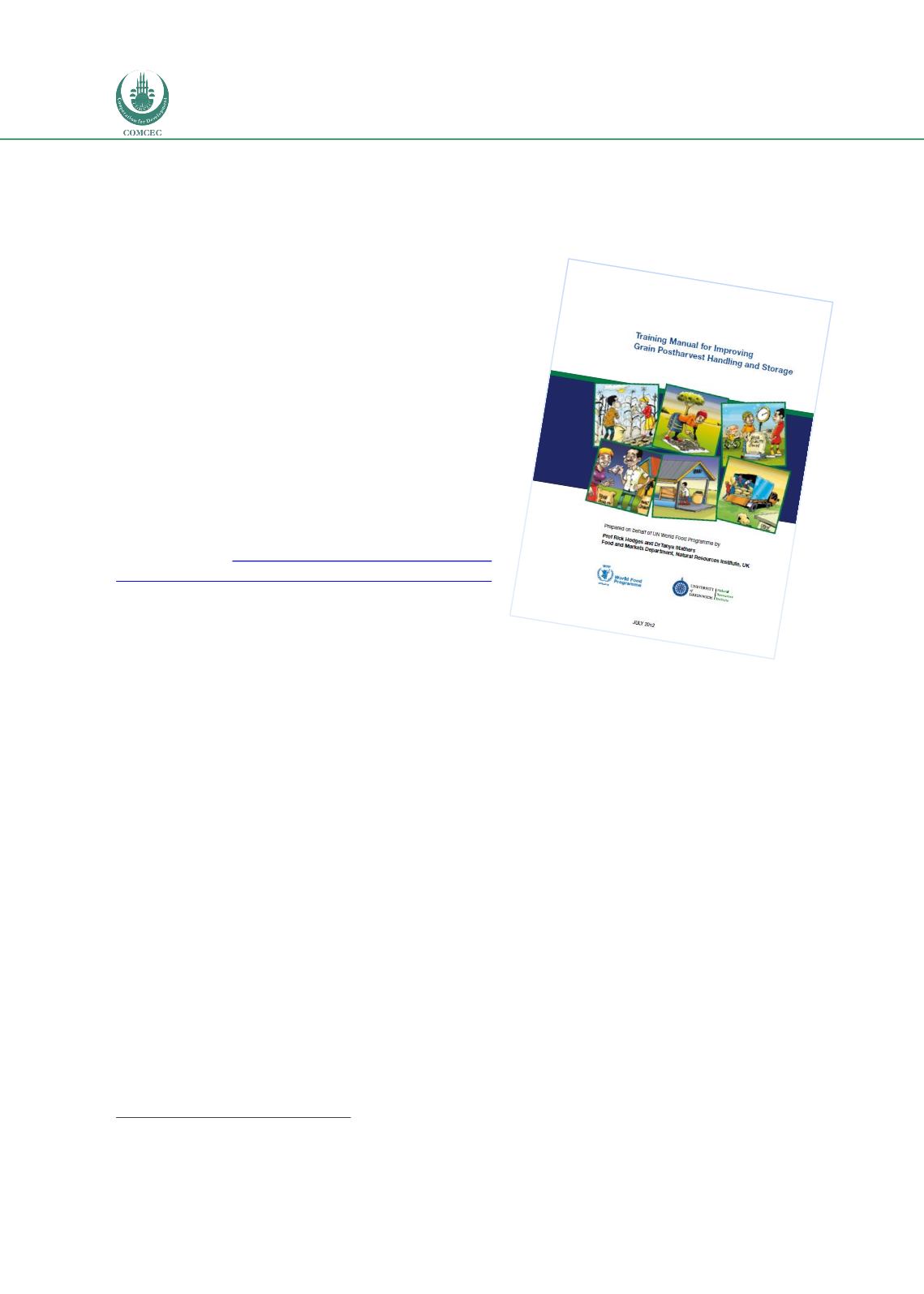

Reducing Postharvest Losses
In the OIC Member Countries
90
greater interaction/communication between cereal postharvest researchers in and outside
Egypt
16
.
Training
– crop postharvest management is often omitted from agricultural training
programmes due to resource constraints,
postharvest activities being seen to be at the end of
the crop cycle, and a lack of familiarity with the
topic by many agricultural trainers. In addition to
running specific multi-disciplinary improved
postharvest management training courses targeted
at the needs of the various actors in the cereal
postharvest supply chain (e.g. extensionists,
farmers, traders, transporters, store managers),
crop postharvest management also needs to be
incorporated into the curricula of primary and
secondary schools and diploma level agriculture
(Stathers
et al
., 2013). Some freely-accessible
hands-on-learning
style
cereal
postharvest
management training materials already exist (e.g.
the WFP/NRI
Training Manual and Course for Improving Grain Postharvest Handling and Storagecreated by Hodges and Stathers, 2012), and could
be adapted to fit the Egyptian context and targeted
towards the different supply chain actors.
Products
– many products already exist which could be adopted and adapted by actors in the
Egyptian cereal postharvest supply chains to help reduce losses. Some of these products
include improved smallholder grain protection options such as hermetic bags, effective
pesticides, drying sheets, threshing machines, and larger scale storage options such as
improved warehouses and stock management systems. However, these products will only be
useful if they are introduced alongside capacity building programmes so that supply chain
actors understand how to use them optimally and why.
Strengthened innovation system functioning
– ongoing co-learning and interaction needs to be
facilitated between the different key stakeholders in the cereal postharvest systems (this can
initially be expensive, and needs to be owned, driven and of value to the supply chain actors if
real issues are to be highlighted and sustainable solutions identified and implemented at the
scale required), this process will also generate demand-driven research agendas which if
followed will increase the perceived relevance of agricultural research to various private and
public-sector stakeholders.
Creating an enabling environment –the enabling environment is diverse and multi-faceted, the
different players including the political leadership will need to be sensitised to ensure they
understand the potential and increasing role to be played by cereal postharvest loss reduction
in national and household level food security. This will help build advocacy for the integration
of postharvest management in development planning and resources and sectoral policies.
16
The need for more postharvest specialists and extensionists and greater communication between postharvest researchers
and development of more inter-disciplinary working styles were also noted by Yahia, 2005.
















